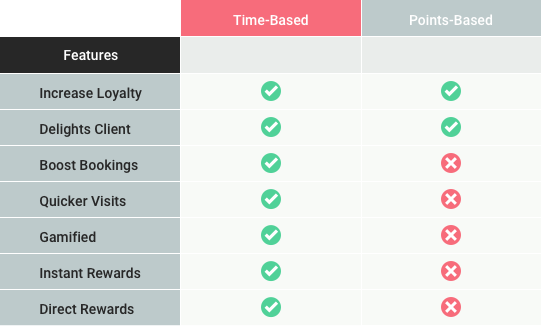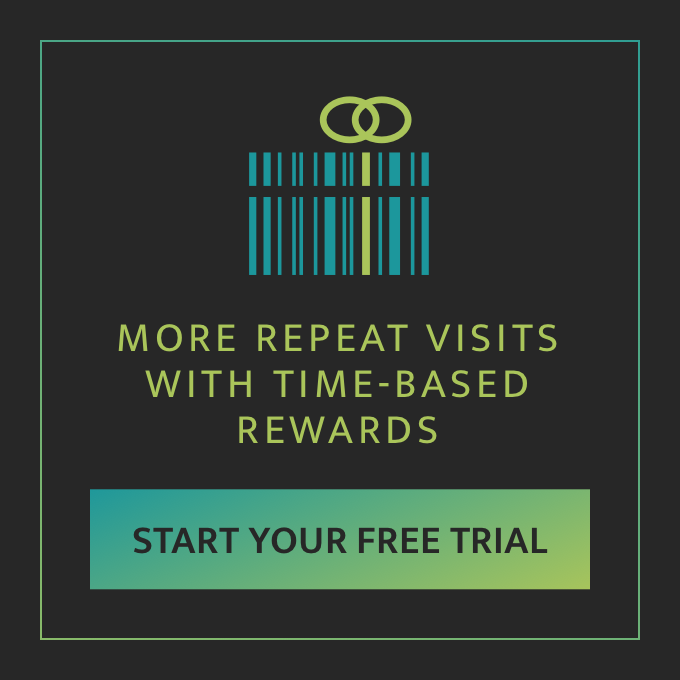Loyalty Rewards Programs Comparison; Time vs Points

Customer loyalty has changed with the changing landscape of industry. From stamps during a the manufacturing age to punch cards for the consumer age, loyalty reward programs have certainly adapted to fit our needs.

We now live in a service-based economy while most client rewards programs still reflect the old world with points for purchases. These types of client retention programs offer the customer points each time they buy something from the business. After points are saved up, they can be traded in for rewards.
Point-Based Loyalty Has It’s Uses
This model works for low cost daily items like coffee and donuts because a customer would visit regularly and rewards would be given frequently. It is hard to say it increases customer loyalty because they probably would visit the location anyways. It does, however, create a good customer experience for those already coming.
As a result, airlines, credit cards, and grocery stores all adopted this model with varying success. Airlines could get you to fly with them in order to rack up miles for travel. Credit cards could get you to use their card for a promise of rewards. Grocery stores could increase your total bill with extra points for promotional items. However, the problem was points took long to earn, and the rewards tended to be low value.
Airlines would “blackout” the desired travel dates, credit card rewards were often products of low desire, and grocery store rarely put the items people wanted in the list of reward items. Customers became leary of points and felt they were just tricks to track consumer spending, which they often were.
Frequency Loyalty is the New Way Forward
Today we have a new type of reward available. Frequency loyalty is time-based and as a result, is more suitable to work for service-basd businesses because success is, above all, dependent on a full scheduler. A time-based program rewards repeat visits if the client returns by a certain time. This is a great way to incentivize quicker repeat visits for service-based businesses where time is the greatest cost to a business.
This comparison chart shows the pros and cons of both time and point-based programs for customer loyalty and retention strategy.





0 Comments